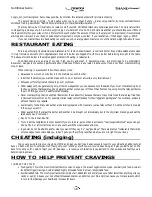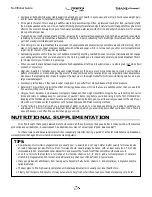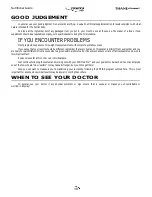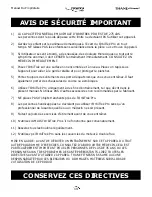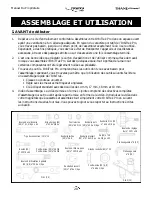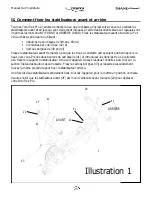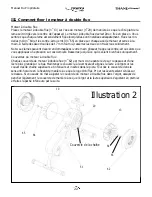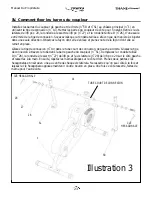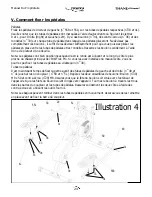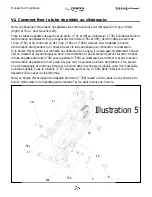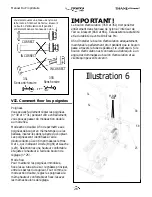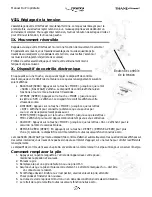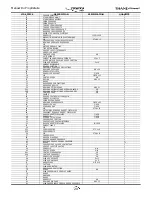
Nutritional Guide
14
D O
S
1 ) A LWAYS BALANCE WHAT YOU EAT
-- so that your intake of complex carbohydrates approximately matches your intake of
p rotein. You may do this by simply eyeballing the foods you are eating. Example: if you have a dish full of pasta in front of you
(high carbs) then you need to balance it with what you approximate to be an equal amount (by volume or better, by weight) of
high protein food.
COMPLEX CARBOHYDRAT E S :
P R O T E I N
• Brown rice
• Boneless skinless turkey bre a s t
• Ya m s
• White meat chicken
• Grits
• Egg whites
• White potatoes
• Pork tenderloin
• Sweet potatoes
• Canned tuna packed in water
• Oatmeal
• Nonfat dairy pro d u c t s
• Oat bran
• Shrimp
• Corn
• Eye of round steak
• Whole grain bre a d s
• Cod
• Whole grain pastas
• Flounder
• Shredded wheat
• Haddock
• Cream of rice cere a l
• Scro d
• Black-eyed peas
• Halibut
• Lima beans
• Sirloin
• Black beans
• Canned white meat chicken in water
• White beans
• Fat free turkey or chicken breast deli slices
• Pinto beans
2 ) DRINK PLENTY OF WAT E R !
Try to drink eight 8 ounce glasses of water each day, or more. It is usually best to use bottled
spring or distilled water, since the water in most areas today is heavily treated with chlorine and other unhealthful chemicals.
3 )
Eat plenty of fibrous vegetables and leafy greens, they are the BEST possible foods to eat! And remember not to ruin
things for yourself by adding oily salad dre s s i n g s !
T h e re are several vegetables that actually use up more energy getting digested than they bring to your body. The digestion of any
food re q u i res an expenditure of energy by the body. Once the food is digested, it releases its own stored energy in the form of calories, which
a re then either used (“burned”) or stored, mostly as fat. Sometimes, the number of calories in a food is lower than the number of calories
it takes to chew and digest it. The act of eating, for example, celery or cucumber, can be a weight losing proposition all by itself — without
e x e rcise or anything! Now isn’t that intere s t i n g . . . ?
Vegetables whose digestion can use more calories than they contain include:
DO N ’ Ts
1 )
Avoid going on repeated diets, each of which usually sets you up to regain everything you lose, and then some, just as soon
as you “go off” your diet. Instead, follow the simple guidelines below.
2 )
D o n ’t add any fat or oil to anything you eat... ever! This is by far the most important rule to re m e m b e r, and it cannot be
o v e remphasized. The words “added fats and oils” have a very specific and special meaning here, re f e rring to all those
unnatural fats and oils that humans manufacture, process, and add to the food they eat. There are no such things as added
fats and oils in nature. They just don’t exist. NATURE makes corn... HUMANS make corn oil, margarine and deep-fried food.
N ATURE creates soybeans and peanuts... HUMANS manufacture soy oil, mayonnaise, and peanut oil.
FOOD & HOW TO CONTROL IT
• Alfalfa spro u t s
• Beet gre e n s
• B roccoli - (a close call)
• C a b b a g e
• Cauliflower - (a close call)
• C e l e ry
• C h a rd, Swiss
• C h i v e s
• C u c u m b e r
• Eggplant - (a close call)
• E n d i v e
• G a r l i c
• L e t t u c e
• M u s h ro o m s
• Peppers - (a close call)
• R a d i s h e s
• Seaweeds of all kinds
• S p i n a c h
• Tomato - (a close call)
• Tu rnip gre e n s
• Water chestnuts
• Wa t e rc re s s

















